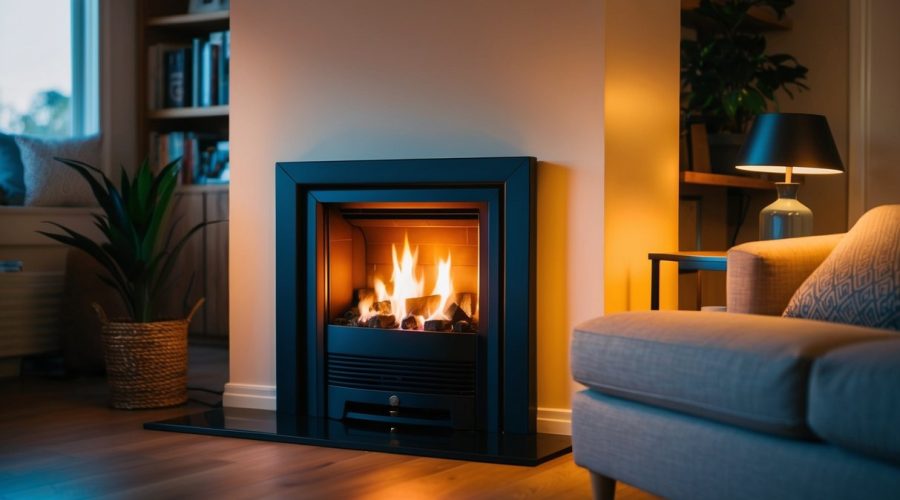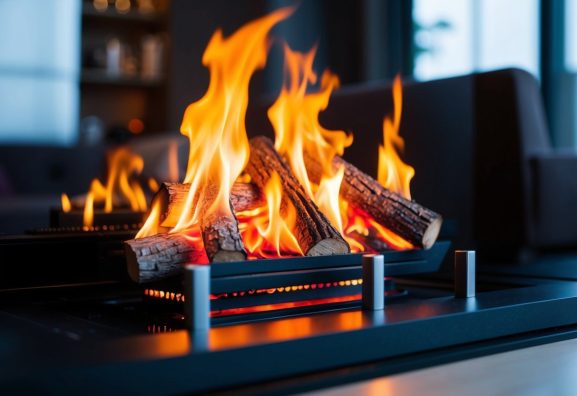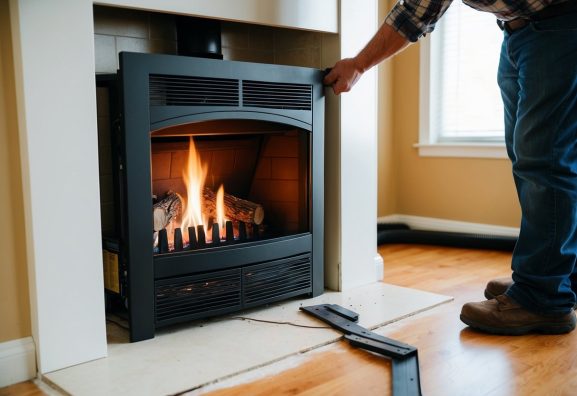Can Gas Fireplaces Work Without Electricity?
A gas fireplace adds both warmth and ambiance to a home. It’s important to know how it functions during unexpected situations, like power outages. Most gas fireplaces can operate without electricity, thanks to ignition systems that do not rely on electrical power. This ability provides significant convenience when the power goes out, allowing homeowners to maintain comfort.
For gas fireplaces equipped with a standing or vertical pilot light, an interruption in electrical service poses no problem. These units continue functioning and delivering heat, although any electric-powered blower or fan will be off, slightly reducing heat circulation. In the dark and cold, this reliable heating option becomes valuable for maintaining coziness.
While gas fireplaces without electricity offer a comforting warmth, safety remains a priority. Ensuring proper maintenance and familiarity with your unit’s features can enhance performance and dependability. With some systems offering battery backup solutions, exploring these options further can be beneficial for consistent operation.
Key Takeaways
- Many gas fireplaces can run without electricity.
- Blowers may not work during power outages, reducing heat distribution.
- Safety and maintenance are crucial for reliable operation.
Understanding Gas Fireplaces and Electrical Dependencies

Gas fireplaces can operate without electricity, but their functionality varies depending on the type of ignition system. Key differences lie in how these systems start and maintain a flame, affecting their operation during a power outage.
Types of Gas Fireplace Ignition Systems
Gas fireplaces use different ignition systems to produce and maintain flame. The standing pilot light is a simple system where a small, continuous flame is always present, requiring no electricity. The intermittent pilot ignition (IPI) systems rely on electronic components to ignite when needed, offering energy efficiency. These systems might come with a battery backup to ensure functionality during a power outage, though not all models include this feature.
Millivolt System vs. Electronic Ignition
The millivolt system is a reliable option that uses a thermocouple to maintain the flame of a standing pilot light. This system works independently of electricity, using the heat of the pilot light to generate the necessary millivolts to operate the gas valve.
In contrast, electronic ignition systems require electricity to spark the ignition, needing either a battery backup or an alternative method for operation during outages. This setup is commonly found in modern fireplaces and may incorporate features to enhance control and efficiency of the gas fireplace.
Operating Gas Fireplaces During Power Outages
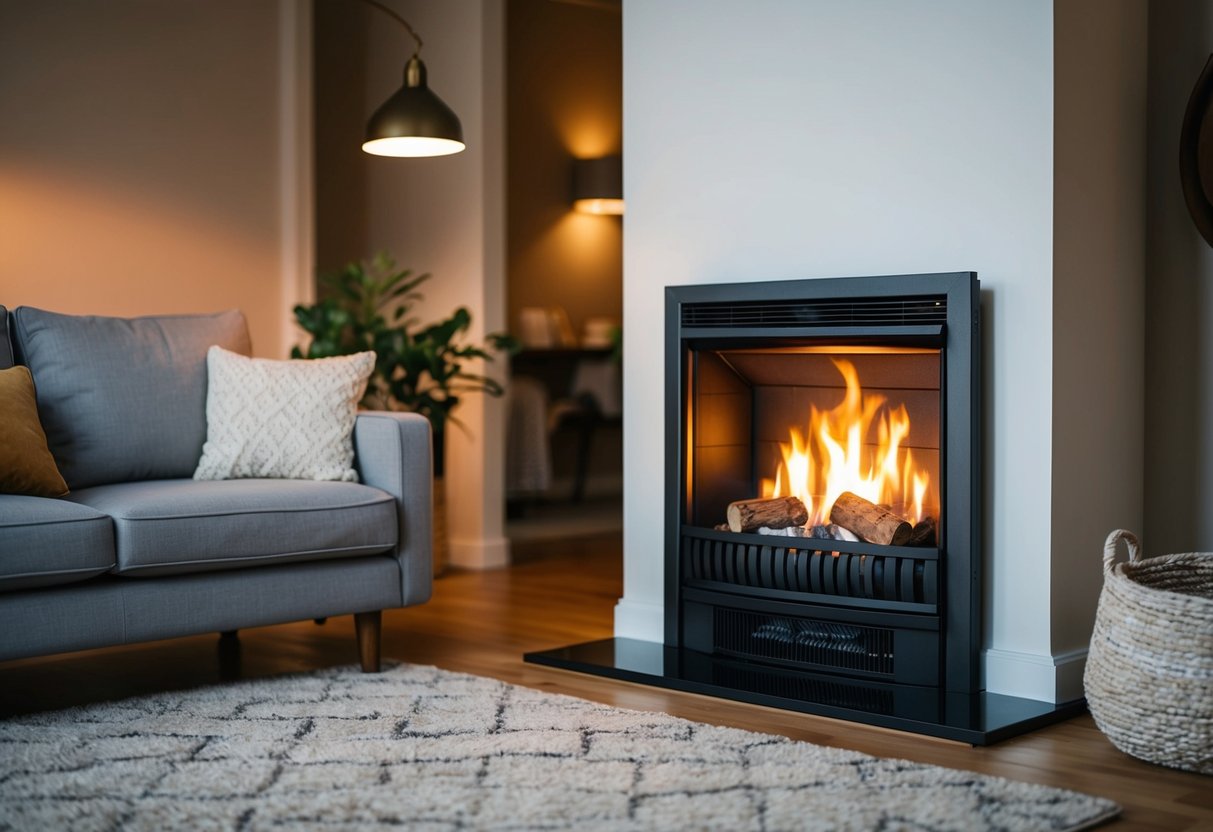
Gas fireplaces are a reliable source of heat during power outages. Most can operate without electricity by utilizing either manual ignition or battery backups.
How to Manually Light a Gas Fireplace
In many models, users can manually ignite the fireplace when the power is out. Locate the gas valve and ensure it is in the “Off” position before proceeding. Turn the valve to the “Pilot” position and hold down the control knob. This allows gas to flow to the pilot.
Use a long lighter or match to ignite the pilot light by holding the flame close to the pilot opening. Once lit, continue to hold the control knob for about 30 seconds to ensure the flame stays lit. Release the knob and turn it to the “On” position. The main burner should now ignite and provide warmth.
Battery Backup Functionality
Many modern gas fireplaces include a battery backup system. This feature is valuable during blackouts, as it allows the fireplace to run without relying on external electricity. Battery packs or receivers are usually installed within the unit.
Ensure the batteries are fresh and replace them as needed to maintain functionality. The battery system typically handles both ignition and operation, seamlessly allowing the user to enjoy the warmth without interruption. Regular checks of battery health and system connections are recommended for optimal performance during unexpected power outages.
Safety and Maintenance
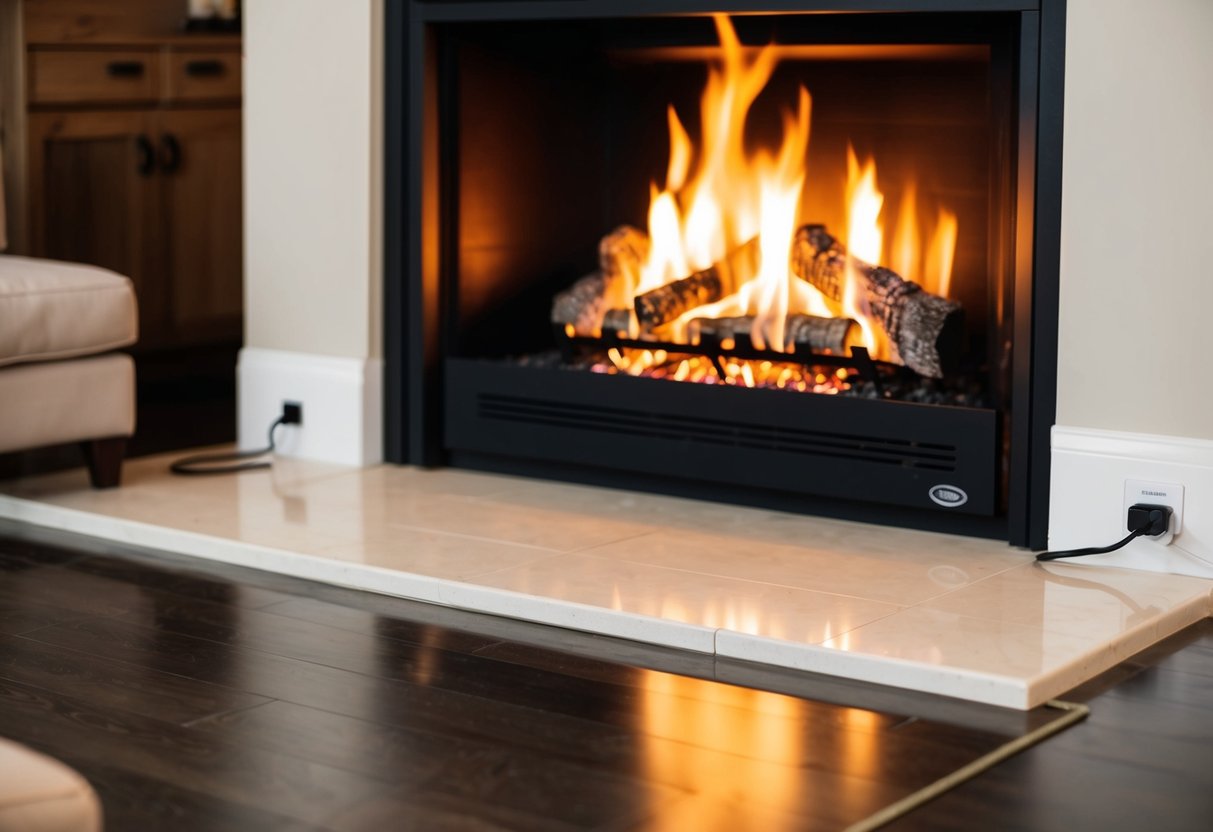
Using a gas fireplace without electricity requires understanding crucial safety and maintenance factors to ensure a safe heating experience. Key focus areas include managing carbon monoxide risks and regular maintenance routines.
Carbon Monoxide Considerations
Gas fireplaces can produce carbon monoxide, a potentially harmful gas. A properly vented fireplace is essential to prevent the accumulation of carbon monoxide inside the home. They should always vent to the outside to allow safe gas expulsion.
Installation of carbon monoxide detectors near the fireplace and in sleeping areas is essential. These devices alert residents to dangerous gas levels, providing a crucial safety measure. Regularly test and maintain these detectors to ensure they function effectively.
Regular Maintenance and Inspection
Routine maintenance is vital for the efficient and safe operation of a gas fireplace. Annual servicing by a professional helps identify and address potential issues before they escalate. Technicians can clean key components, check for leaks, and verify proper ventilation.
Homeowners should regularly inspect visible parts of the fireplace, ensuring there is no obstruction in the vents. Checking the glass and seals for cracks and ensuring the pilot light is stable are also important. Simple maintenance tasks can greatly extend the lifespan of the unit.
Enhancing Performance and Efficiency

Gas fireplaces can operate without electricity by utilizing features that enhance their performance. Optimizing heat distribution and minimizing gas consumption are crucial aspects of achieving efficiency.
Maximizing Warmth and Heat Distribution
Effective heat distribution is key to maximizing the warmth a gas fireplace can provide. Direct vent fireplaces are particularly efficient, as they utilize outside air for combustion, ensuring better heat retention within the home.
Strategically placing the fireplace can also improve heat circulation. For instance, positioning it centrally in the main living area can allow warmth to spread more evenly throughout the space. Using ventless gas fireplaces can further improve heat retention, as these models don’t have a chimney or vent loss.
Consider integrating an energy-efficient thermostat to maintain a consistent temperature and enhance comfort.
Reducing Gas Consumption
Reducing gas consumption helps increase the efficiency of a gas fireplace. Models equipped with a thermostat can help maintain the desired room temperature by automatically adjusting the flame, preventing excessive gas use.
Opt for a model with adjustable flame settings, allowing for control over gas flow and consumption. Regular maintenance is also necessary to ensure all parts of the fireplace function efficiently.
Checking for leaks and cleaning the burners periodically can prevent waste while keeping the system operating smoothly. Additionally, using a fireplace at optimal settings during colder months can significantly minimize gas consumption.
Additional Considerations for Gas Fireplace Operation
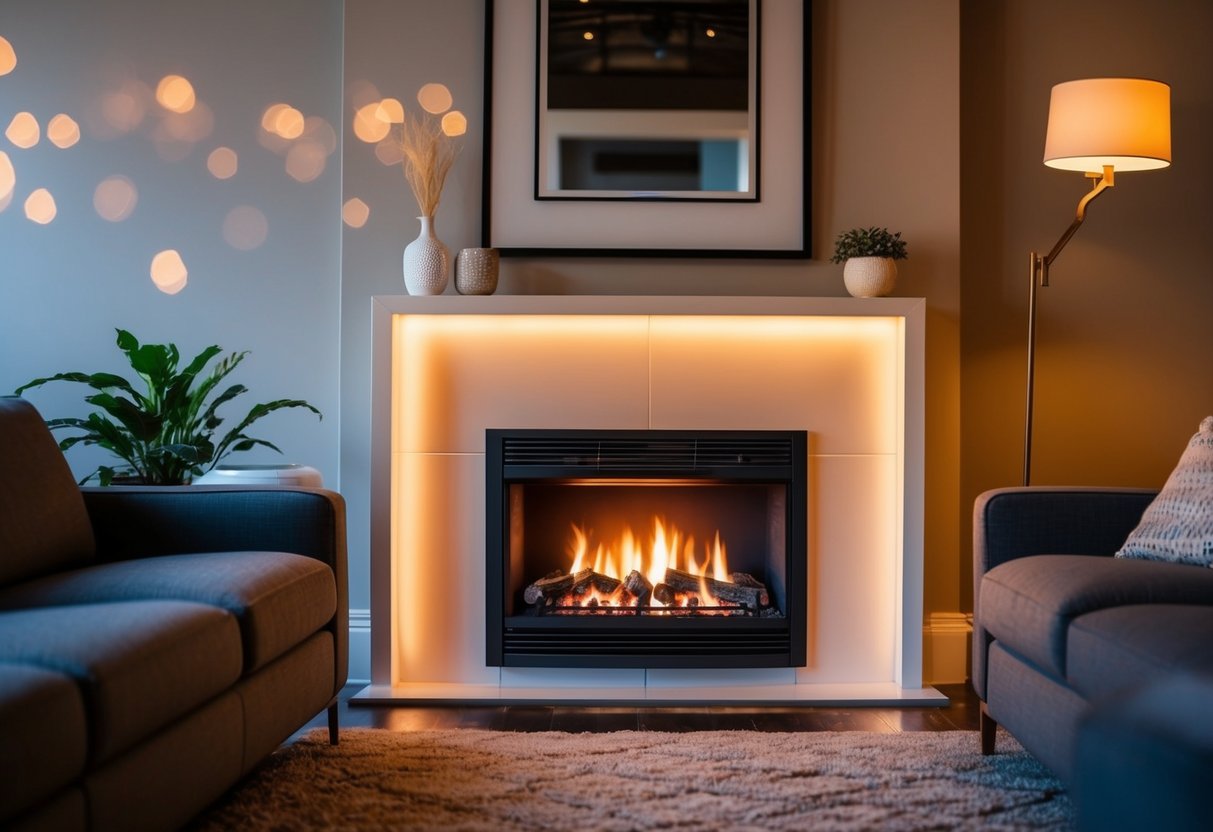
Gas fireplaces provide heat even without electricity, making them ideal during power outages. Important factors such as installation, ventilation, and comparisons with electric alternatives highlight key considerations for effective operation.
Installation and Ventilation Requirements
Proper installation of a gas fireplace is crucial to ensure safety and efficiency. Natural gas and propane models often require different setup procedures, impacting space and design choices. A qualified technician can ensure that all connections are secure and meet local building codes.
Ventilation systems play a vital role in maintaining indoor air quality. Direct-vent gas fireplaces, for example, draw air from outside for combustion and expel fumes through a sealed system, minimizing the risk of carbon monoxide buildup. Adequate ventilation helps prevent harmful emissions from affecting residents’ health.
Remember that installation and ventilation requirements may vary based on the model and local regulations, so it is essential to consult with professionals during the planning stage.
Comparing with Electric Fireplaces
Electric fireplaces differ significantly from gas models in terms of fuel source and installation requirements. They often require only a standard electrical outlet, making them easier to install in various locations without significant renovations.
Gas fireplaces, using natural gas or propane, can provide heat during power outages, a feature electric versions lack unless connected to a backup generator. While electric options offer flexibility and cleaner operation without emissions, they depend entirely on electricity, posing a limitation when energy supply is disrupted.
Consider these factors when choosing between gas and electric fireplaces, especially in areas prone to power interruptions. Each type has its own benefits, catering to different preferences and logistical needs.
Frequently Asked Questions
Gas fireplaces can often be used when no electrical power is available, depending on their design and components. Below are detailed insights into ignition methods, operation without electricity, safety tips, and options that function independently of the power supply.
How can I ignite a gas fireplace during a power outage?
Many gas fireplaces use a pilot light that remains lit, allowing for easy ignition without electricity. Models with electronic ignition might have a battery backup system for lighting during outages.
Is a gas fireplace operable when the electricity is out?
Yes, many gas fireplaces can operate without electricity. Units with a standing or vertical pilot light maintain a flame source even when the power is cut.
Do gas fireplaces require their own electrical circuits to operate?
Gas fireplaces typically do not need their own electrical circuit unless they have additional features like blowers or electronic ignition, which require electricity to function.
What are the safety considerations for running a gas fireplace continuously?
Proper ventilation is crucial to avoid carbon monoxide buildup. Regular maintenance ensures safe operation. It is important to follow all manufacturer instructions and recommendations for extended use.
Can natural gas fireplaces function during a widespread power grid failure?
Yes, natural gas fireplaces with a pilot light or battery backup can function during power grid failures, providing heat even when the electricity is out for extended periods.
Are there gas fireplace options available that do not require any electrical power?
Vent-free models and those with mechanical controls operate without electricity. These options rely on the standing pilot light or manual ignition, making them independent of the electrical grid.

